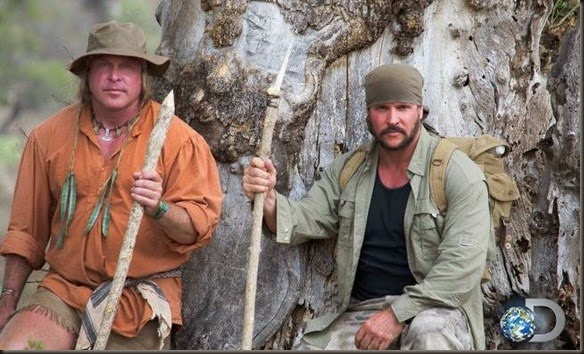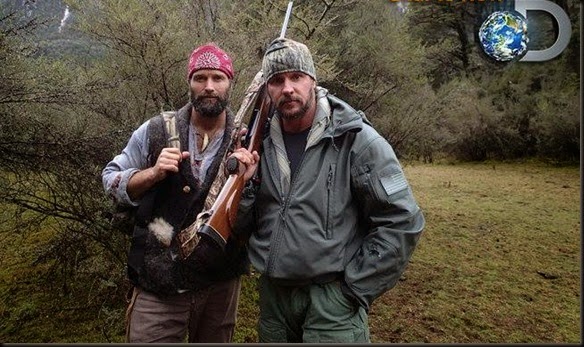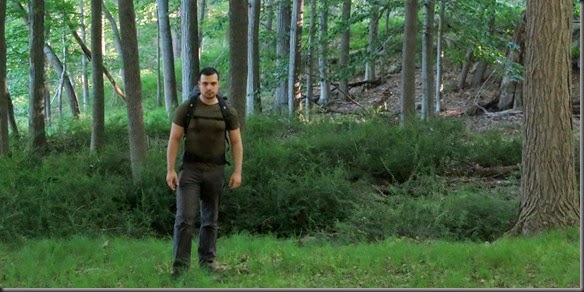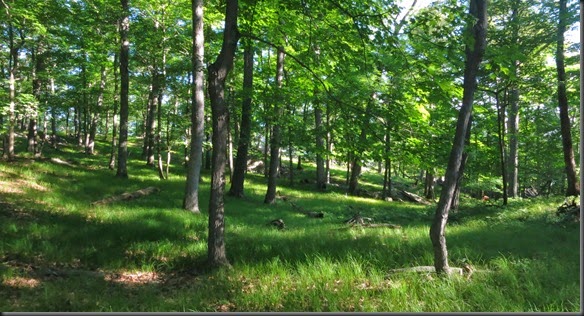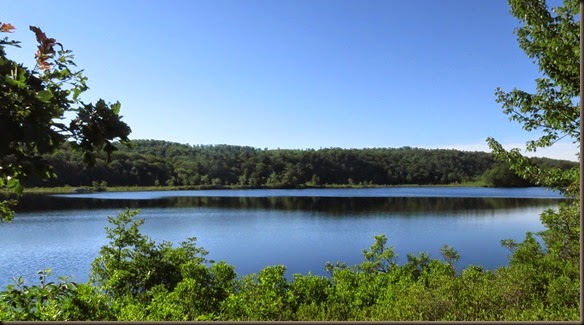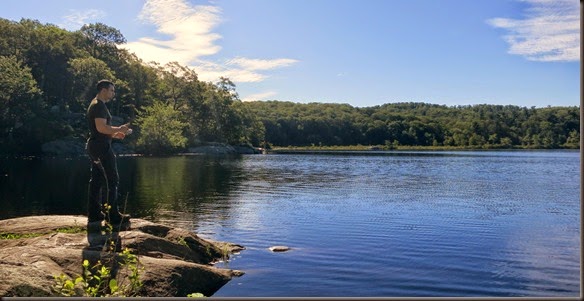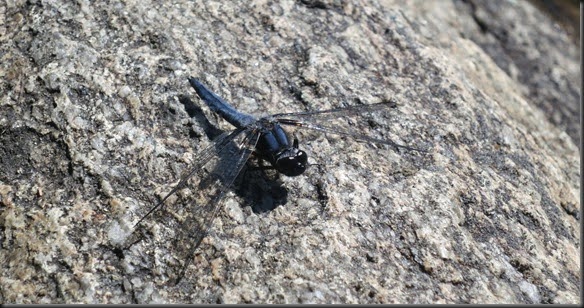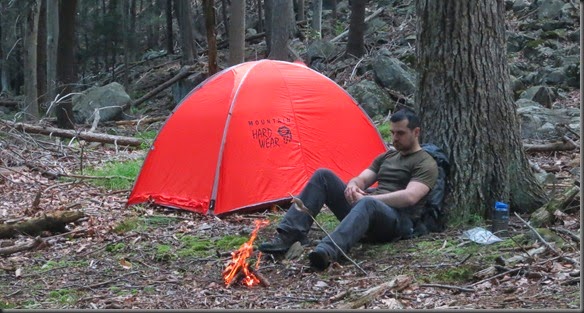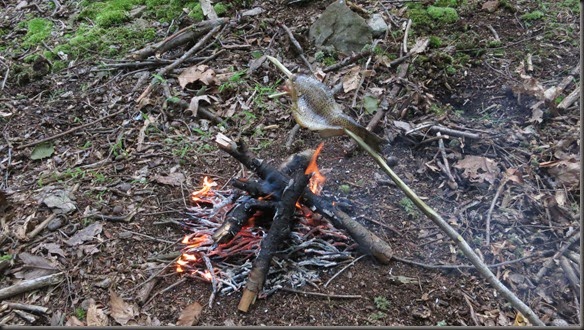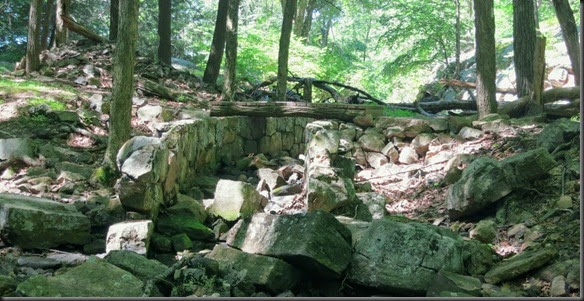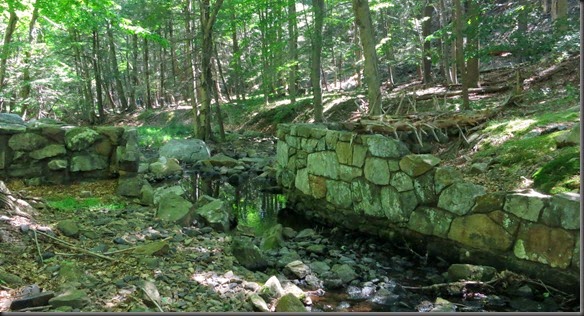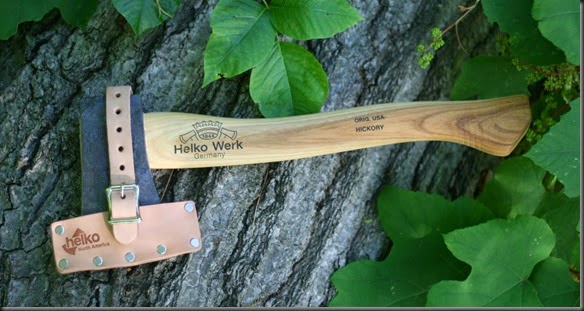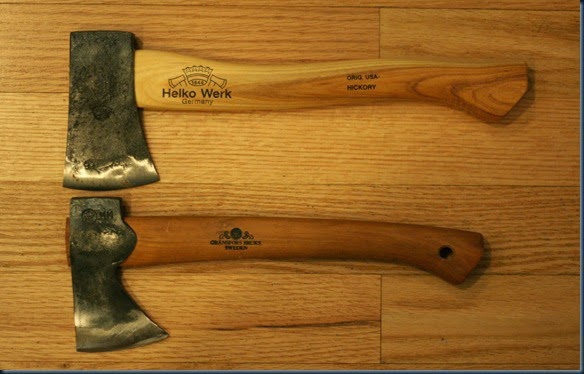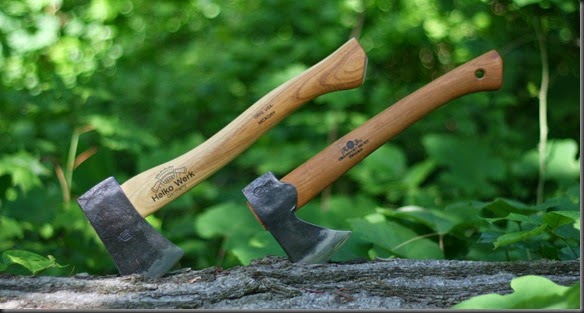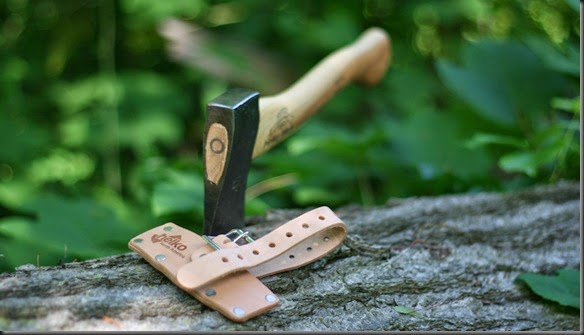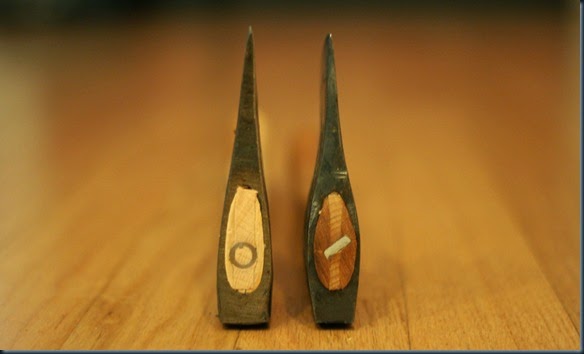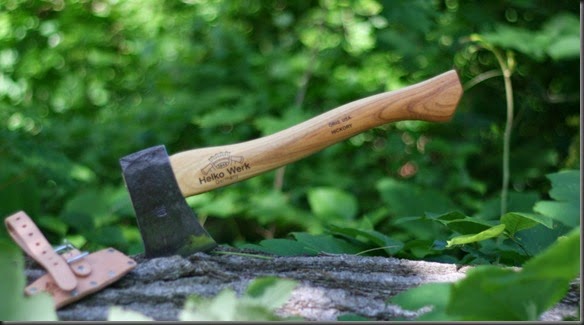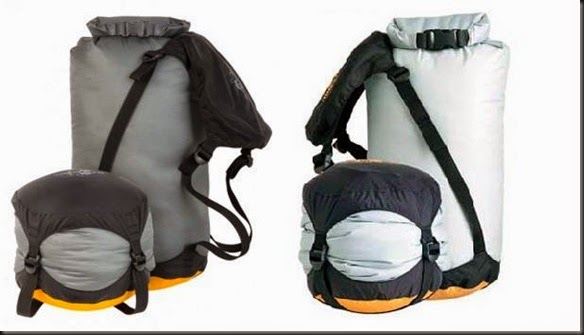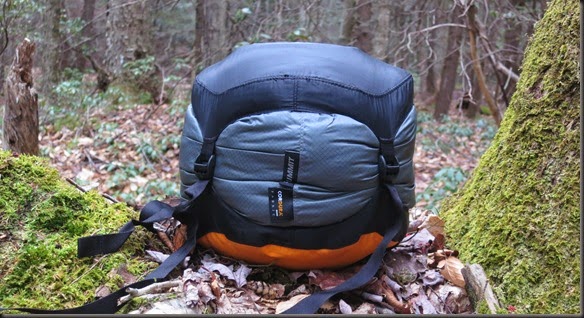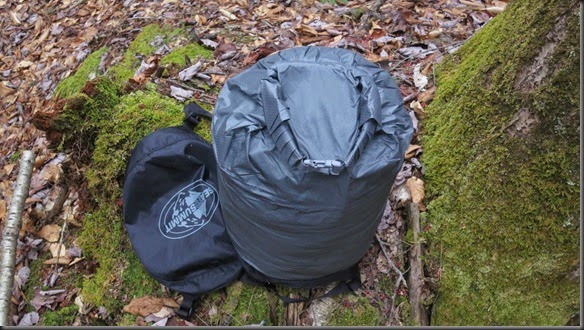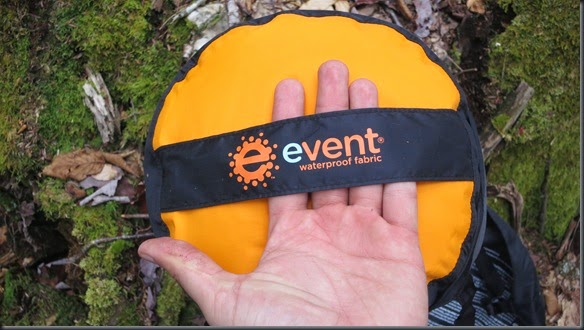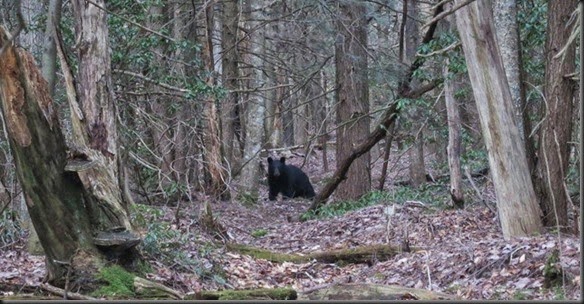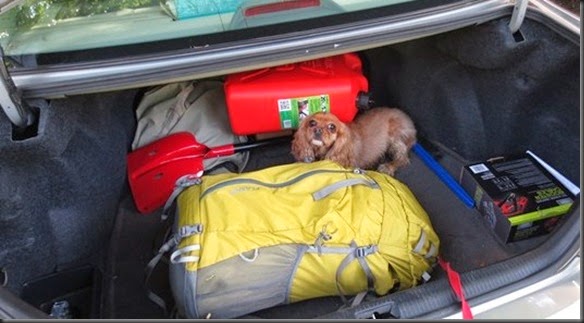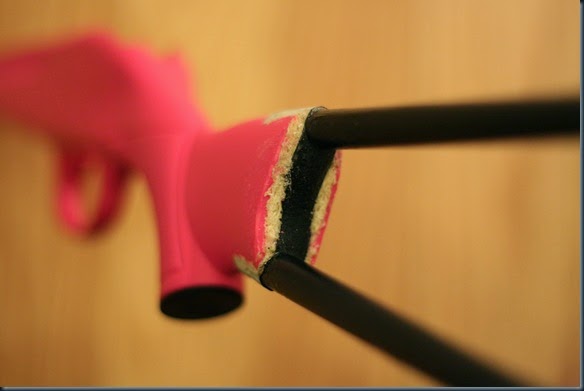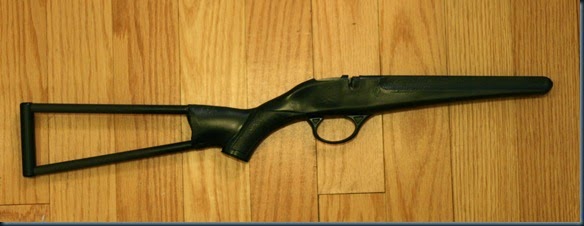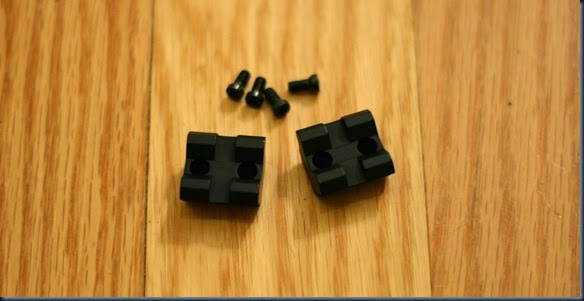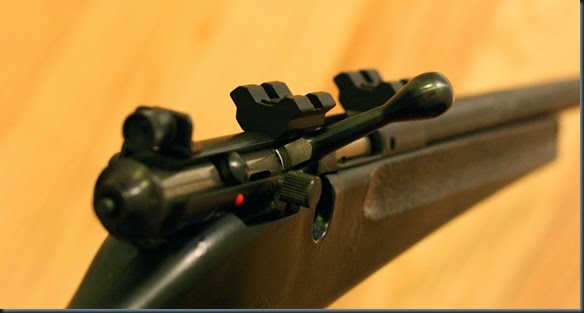Wow, long title! What am I going to ramble on about here? Well, all of the above terms, Long Term Wilderness Living, Wilderness Self Reliance, and Long Term Wilderness Survival get tossed around a lot these days. In particular, they get used when discussing skills or gear selection for the outdoors. Here I want to attempt to define these terms from my perspective, as it applies to the concept of The Modern Woodsman, so you know what I mean when I use the terms in a discussions, and my thinking behind it. I believe a lot of the conflicts and disagreements we have when it comes to discussing issues related to these terms stem from us having widely different definitions of the terms themselves.
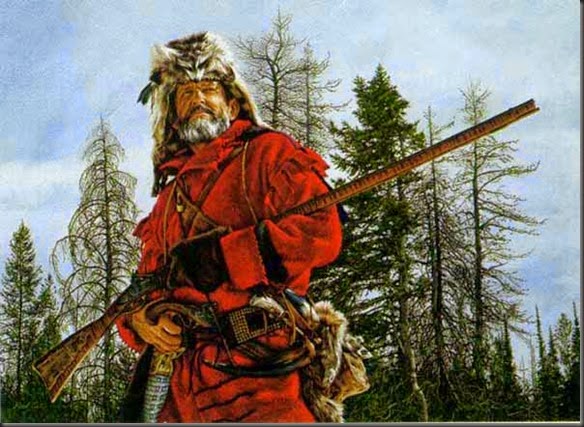
Before I begin, I want to make clear that when we talk about the definitions of “long term wilderness living”, “wilderness self reliance”, and “long term wilderness survival”, or any other variant of the terms you would like to use, I don’t want to get bogged down with trying to distinguish “living” from “self reliance” from “long term survival”. We can split hair forever. The bottom line as far as I am concerned is that you have found yourself somewhere in the woods for one reason or another, and you have to stay there for an extended period of time. Whether we call it wilderness living, self reliance, etc, is immaterial as to what I intend to discuss here. For purposes of this post, I will refer to all three of the above phrases as long term wilderness self reliance.
Wilderness:
The part of the above terms that I do want to talk about, and which we often define in very different ways, is the term “wilderness”. It seems like a simple enough term, but very often you will hear people talk about gear or skills for a long term “wilderness” self reliance scenario, and will quickly become very perplexed because the gear is clearly unsuited for the actual wilderness. After going back and forth with several people who are proponents of these concepts, it finally struck me that we are talking about two very different things.
For me the wilderness involves being in an area where you do not have any contact with people or civilization. My understanding is that incorporated into my thoughts on The Modern Woodsman: an individual who is able to undertake long term, long distance trips, deep into an area devoid of human contact or civilization, only with supplies one could carry and what could be gathered from the surrounding environment. More specifically, as the Mirriam-Webster dictionary defines it, wilderness is a tract or region uncultivated and uninhabited by human beings.
Unfortunately, this is not how the term is used by a lot of people who talk about long term wilderness self reliance and all of its permutations. It appears that what they call wilderness is in fact a rural, or suburban environment. Long term rural self reliance (encompassing the phrases “rural self reliance”, long term rural living”, and “long term rural survival”) in my opinion is very different from long term wilderness self reliance. Using the term “wilderness” for both concepts creates a lot of confusion. If your “wilderness” hunting or trapping involves being on the edge of a farm, then this is not wilderness but rather rural self reliance. If your plan for ammunition resupply involves going into a house or store to get more ammunition, then this is rural or suburban self reliance, not wilderness self reliance. If your concept of long term wilderness living involves transporting 500lb of gear with your truck on a road, then that is rural homesteading, not long term wilderness self reliance. I don’t want to get bogged down into what “true” wilderness actually is, and there will be grey areas, but the distinction is easy to see for people who are not philosophers.
That is not to say that there is anything wrong with either concept, or that one is better than the other. Having rural self reliance skills and gear may prove to be much more valuable to a person than having wilderness self reliance skills or gear. Rural environments are much more common these days than actual wilderness, so in a prepping type of scenario, having rural self reliance skills may be the better way to go. Knowing how to run a trap line behind your house may keep your family much better fed than knowing how to run a trap line 50 miles into the woods. However, they are not the same thing. Gear and techniques that may work in a farm area are not necessarily well suited for the actual wilderness.
A prime example of this difference is hunting and trapping. Hunting and trapping in a rural setting is very, very, very different from hunting and trapping in a wilderness setting. People often brag to me about how many deer they killed, or how many raccoon they trapped, but the reality is that that was all done within a mile from the back of their house. There is nothing wrong with that, but it’s very different from hunting in an actual wilderness. You can go to the edge of an apple orchard and shoot fat squirrels one after the other all day long. You can trap raccoons in that same area who come to eat the farm produce or human trash, with similarly spectacular results. That however has little to do with hunting or trapping those animals in the wilderness. What we are hunting and trapping in a rural setting are partially domesticated animals. They are currently going through the same process that transformed the wolf into a dog. There is a lot of food around areas of human habitation. Animals come close for the food. Over time they become less afraid of people. They start to gather in larger numbers because of the abundance of food. The result is game that is relatively easy to hunt and trap. Go 50 miles into the woods however, and it will be a very different story.
Another obvious impact of the difference between rural self reliance and wilderness self reliance is that of gear selection. In particular, the portability of gear has a very different impact on the two systems. Carrying a base weight of 40lb is not a big deal if you plan on carrying it a short distance into the woods where you can set up a base camp from which you will set trap lines. It is a different story if you have to carry all of your gear for 50 miles, or even more so, if you are carrying it 20 miles a day for months at a time. The value of having a 10lb tent changes drastically depending on what type of long term self reliance situation we are undertaking. Bomb-proof gear is an easy and obvious choice when you don’t have to carry it anywhere.
Again, there is nothing wrong with knowing how to hunt and trap in a rural setting, and that may prove to be the more valuable skill from a prepping stand point, but it is very different from wilderness hunting and trapping.
Long Term:
The second aspect of the above terminology that I would like to address is the words “long term”. “Long term” is a vague concept that can cover anything from a month to a lifetime. Very often we speak of long term wilderness self reliance, without specifying what we mean by “long term”. That can create a lot of confusion. Gear designed for long term wilderness self reliance where “long term” means six months, is very different from gear designed if by “long term” we mean 20 years. Unfortunately, we tend not to make these distinctions, and someone who has spent a month camping out will then talk about what gear you need if you are going to spend 10 years in the woods. Unfortunately, this creates a lot of confusion.
Let me start by stating that if we are talking about really long term wilderness self reliance, then we have to understand that no gear lasts forever. Several years of daily use of a piece of gear in the wilderness will destroy just about anything. A canvas tarp that has been exposed to the elements daily for several years will rip like paper. Iron pots will fall apart. A prime example of this is the Lykov family in Russia, who lived alone for decades in the wilderness. They brought large amounts of equipment with them, including a wood stove, pots, agricultural equipment, etc, but by the time they were discovered, none of that equipment had survived. For more of their story, you can read the post here.
So, if we are talking about “long term” wilderness living, we have to be realistic about our expectations. I strongly believe that a Modern Woodsman can develop the skills and carry the equipment necessary to live in the wilderness for a year or so. That of course presumes a certain amount of luck. A broken leg on day 10 will make the rest of the year quite challenging. Barring such occurrences, I personally think that discussing long term wilderness living through a one year time frame is reasonable as well as productive. This view of “long term” wilderness living largely conforms to the historical examples we have such as the long hunters and mountain men, who also functioned seasonally or annually between resupply and re-establishing contact with civilization, however temporary.
Of course, the above approach to the phrase “long term” will change radically if we are talking about rural self reliance rather than wilderness self reliance. In a rural setting you can resupply with ammunition, tools, supplies, etc. That will greatly alter how long a person can stay in the woods.
With respect to The Modern Woodsman however, i.e. a person with all the gear on his back traveling through the wilderness, such an approach is not available. The Modern Woodsman is an individual who undertakes long term, long distance trips, deep into an area devoid of human contact or civilization (wilderness), only with supplies he can carry and what could be gathered from the surrounding environment. Again, nothing wrong with either approach, and if civilization ended tomorrow, living in a rural setting might be the better choice, but that is very different from long term wilderness self reliance, and quite removed from the concept of The Modern Woodsman. So, when you hear me discussing “long term” wilderness self reliance in the context of The Modern Woodsman or even generally, I am usually speaking about periods of time around a year in length.
Rule of Law:
Rule of law is not a specific definition, but rather a concept that governs the understanding of the above terms. Simply put, whether or not rule of law still exists at the time you are undertaking your long term wilderness self reliance or long term rural self reliance journey, will greatly impact how you would be able to accomplish that.
One possible scenario that we may encounter when speaking about long term wilderness self reliance, is one where the rule of law still exists. This is a scenario where you have chosen to go into the wilderness for an extended period of time, and will do so while complying with all regulations and laws. This is the type of situation where the concept of The Modern Woodsman is designed to function. A good example is Dick Proenneke, who in 1968 decided to construct a cabin near Twin Lakes in Alaska, and live there for a year. He liked it so much, that with regular resupply flights done by his brother, he continued to live in his cabin until 1999. His journey was accomplished while complying with all laws and regulations.
A different scenario would be one where civilization and the rule of law has ended (insert your favorite apocalyptic story here), and you have gone into the wilderness out of necessity. A good realistic example would be the Bielski partisans in Belarus, who in 1941 had to hide in the forests in order to escape the Nazi occupation.
Obviously the above scenarios would heavily influence the requirements of skill and gear. Keeping aside any military action that may be needed, being able to hunt deer three weeks out of the year in compliance with local laws is very different from being able to hunt deer year round. On the other hand, in a situation where there is no rule of law, hunting pressures would be much higher due to the increased hunting by people other than you. People often worry about what would happen if whole cities went to the forest to start hunting. The reality is that even without such huge population shifts, simply allowing existing hunters to hunt year round without any regulations, would drive most species to the brink of extinction. It has happened with white tail deer here in the north in past decades, and even the huge beaver populations were nearly driven to extinction across the continent of North America by a handful of mountain men trapping for fur. These are all things to keep in mind when planning your long term wilderness self reliance journey.
With respect to The Modern Woodsman, as I’ve mentioned before, the concept is designed to function within existing laws and regulations. The Modern Woodsman is one who develops skills and gear which would allow him to undertake long term, long distance trips, deep into the wilderness, only with supplies he could carry and what could be gathered from the surrounding environment. More importantly, the trips undertaken occur in the present, within the context of our current society, laws, and regulations.
Bringing It All Together:
I have written all of the above as an attempt to define how I use, and will continue to use the terminology involved in discussions about long term wilderness self reliance. I view it in the context of The Modern Woodsman. As a result, when I speak of long term wilderness self reliance, I am assuming an actual wilderness setting, not a rural or suburban one, I’m speaking about a time frame of roughly a year, and I am assuming the activity will be performed under current laws and regulations.
There is nothing wrong with studying self reliance in a rural setting, or planning for stays longer than a year, or thinking about skills and gear needed in the event civilization collapses. However, that is not how I use the terms. I think understanding exactly what we mean when we use this terminology will prevent a lot of the conflicts out there when it comes to the subject.

